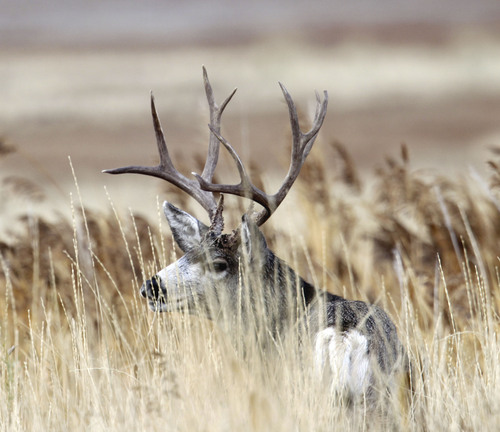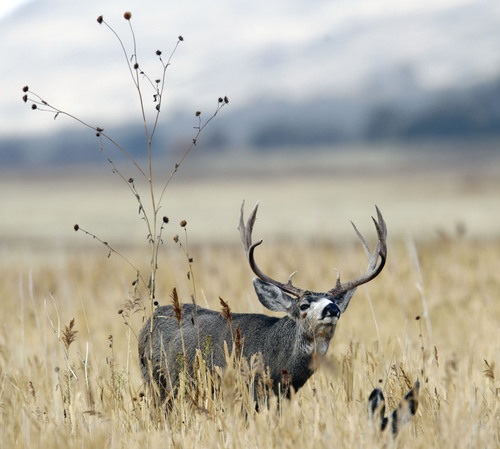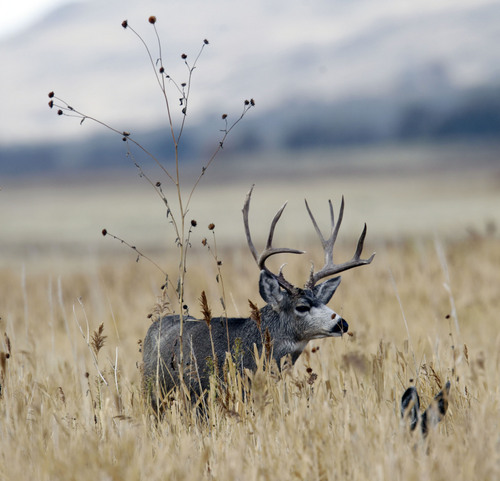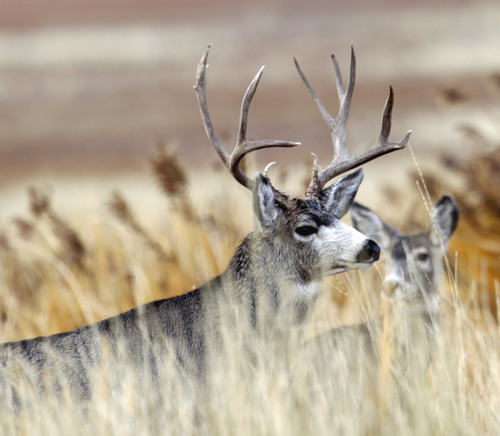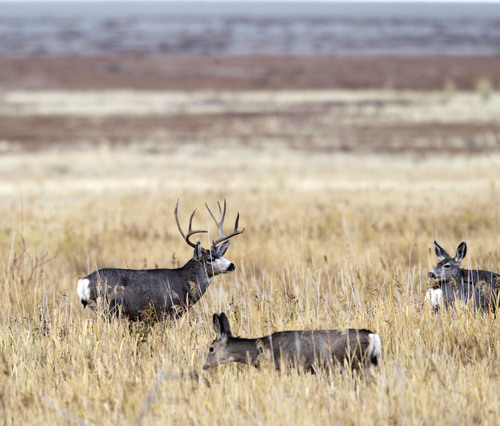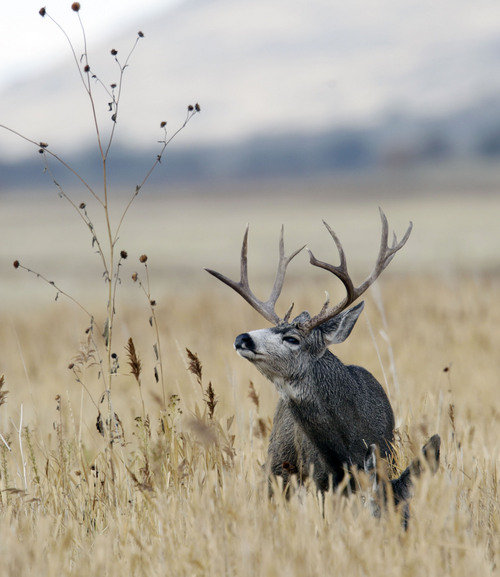This is an archived article that was published on sltrib.com in 2013, and information in the article may be outdated. It is provided only for personal research purposes and may not be reprinted.
Hunting remains the main tool for maintaining healthy populations of big game animals across Utah, but some herds are found where shooting is not allowed or where killing them would draw public outcry.
The Utah Division of Wildlife Resources (DWR) wants to increase the frequency of relocating mule deer to keep some populations at levels set as objectives. Officials will be presenting options for release locations during meetings across the state in November.
"In certain situations relocating deer is the best for people and best for wildlife," said Scott McFarlane, private lands/public wildlife coordinator with the DWR. "This opens up an option for some of those situations."
Two locations have been identified as the source for possible deer transplants: the urban herd in the city of Bountiful and the prospering herd on Antelope Island. The only steps needed now are hearings to give the public a chance to comment on the proposed release sites and approval from the Utah Wildlife Board.
Most of the animals would likely come from Antelope Island State Park, where up to 200 deer could be removed to help draw down the population. While deer hunting is allowed on the largest island of the Great Salt Lake, it is limited to a special drawing for a permit for one buck deer and another permit sold in an annual auction.
Park officials say the most recent count on the island last February was slightly more than 800 deer.
"We want to be closer to 300 or 350," said Antelope Island State Park manager Jeremy Shaw. "We really don't want to have more hunting than we do now and this is a good way to satisfy the objective."
Barbara Riddle — who has long fought against more hunting on the island, but is not against hunting overall — says she supports a transplant.
"If there is a way to effectively and safely take the deer off the island and transplant them somewhere else in the state to help raise numbers elsewhere that would be a plus for all parties," said Riddle, a member of Friends of Antelope Island State Park who serves as president/CEO of the Davis Area Convention and Visitors Bureau. "This is better for the resources than bringing more hunters out to the island."
Riddle is concerned that a growing number of national and international tourists, who view Antelope Island as a wildlife sanctuary, will be turned off by 200 people toting guns around and dragging dead deer.
Many Bountiful residents have long complained about the number of mule deer running around neighborhoods, eating rose bushes and tomato plants or getting hit by cars.
While other options — such as allowing archery hunters to thin the herd or providing some sort of birth control for the wild deer — have been explored, wildlife officials feel transplants may provide the best alternative. The city of Highland recently started an urban hunt to try to lower deer numbers.
"We haven't done a lot with deer transplants in Utah; we are just really starting to open that door," said Justin Shannon, big game coordinator for the DWR.
It is too early to gauge the success of a Utah mule deer transplant that took place last winter, according to Shannon, but he acknowledges that deer typically do not do well when relocated.
"There is a 50 to 60 percent survival rate in the first year," Shannon said. "We are really anxious to learn and understand more about why that is."
Wildlife biologists across the state identified the hunting units where they felt deer had done well in the past, but were currently struggling despite adequate forage.
Eight units — Box Elder, Nine Mile, San Juan/Abajo Mountains, Wasatch Mountains/Currant Creek, West Desert/West, Southwest Desert, Fillmore/Oak Creek and Mt. Dutton — are being proposed as possible locations to take the deer from Antelope Island or Bountiful.
If approved, Shannon said the transplants from Antelope Island could start this winter.
Twitter: @BrettPrettyman Deer prudence • What's the best route?
The Utah Division of Wildlife Resources is scheduling meetings statewide to discuss proposed changes in big-game hunting and mule-deer management. After the meetings, the Utah Wildlife Board will discuss proposals and public comment before it votes.
Nov. 6 (Northern Region) • 6 p.m., Brigham City Community Center, 24 N. 300 West
Nov. 7 (Central) • 6:30 p.m., Springville Public Library, 45 S. Main St.
Nov. 12 (Southern) • 6 p.m. Cedar Middle School, 2215 W. Royal Hunte Dr., Cedar City
Nov. 13 (Southeast) • 6:30 p.m., John Wesley Powell Museum, 1765 E. Main St., Green River
Nov. 14 (Northeast) • 6 p.m., DWR Region Office, 318 N. Vernal Ave., Vernal
Dec. 5 • Utah Wildlife Board meeting, Department of Natural Resources boardroom, 1594 W. North Temple, Salt Lake City, 9 a.m.
• Get an information packet on the upcoming meetings and learn how to submit your comments via e-mail. > bit.ly/utwildlife On the Utah Wildlife Board agenda Dec. 5
Other items to be discussed at the Dec. 5 wildlife board meeting:
Whether to allow archery hunting on waterfowl management areas for mule deer and pronghorn.
Determine appropriate age classification for a "youth" hunter.
Creation of a new hunter-mentoring program that would allow a mentor and a young hunter to hunt with and shoot a big-game animal under the mentor's hunting tag.
Whether to allow magnifying scopes on muzzleloaders, draw local devices on bows and the use of crossbows during the any-weapon big-game hunts.
Splitting the any-weapon limited-entry deer hunt on the Book Cliffs into two areas.
Opening Mount Timpanogos and Rock Canyon near Provo to bighorn sheep hunting.


